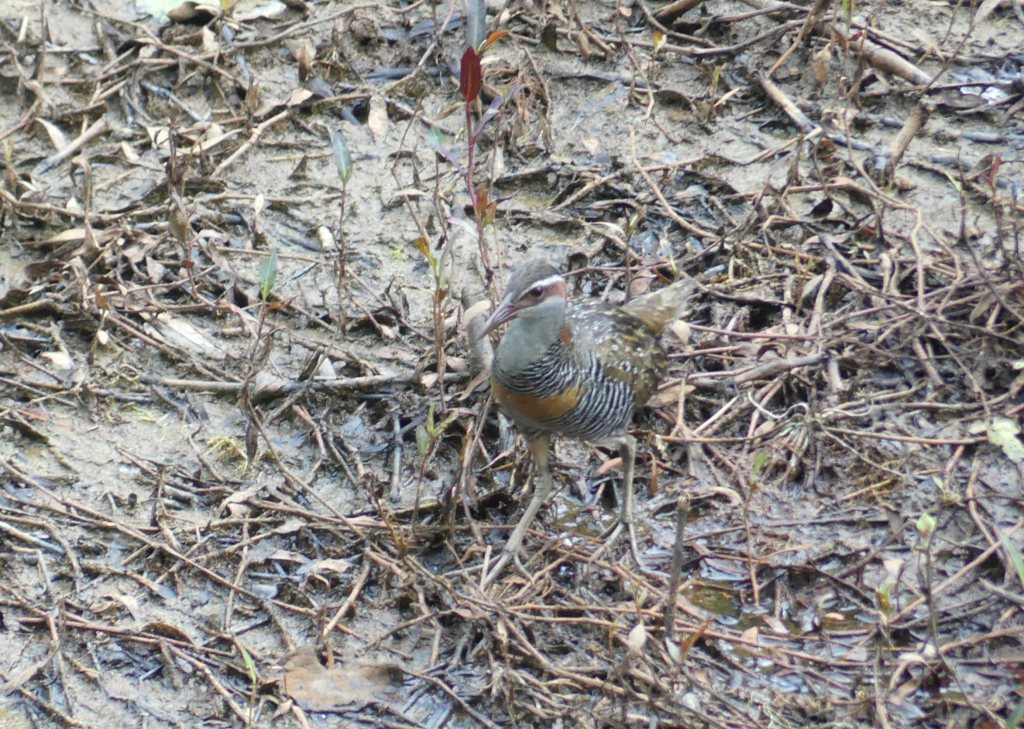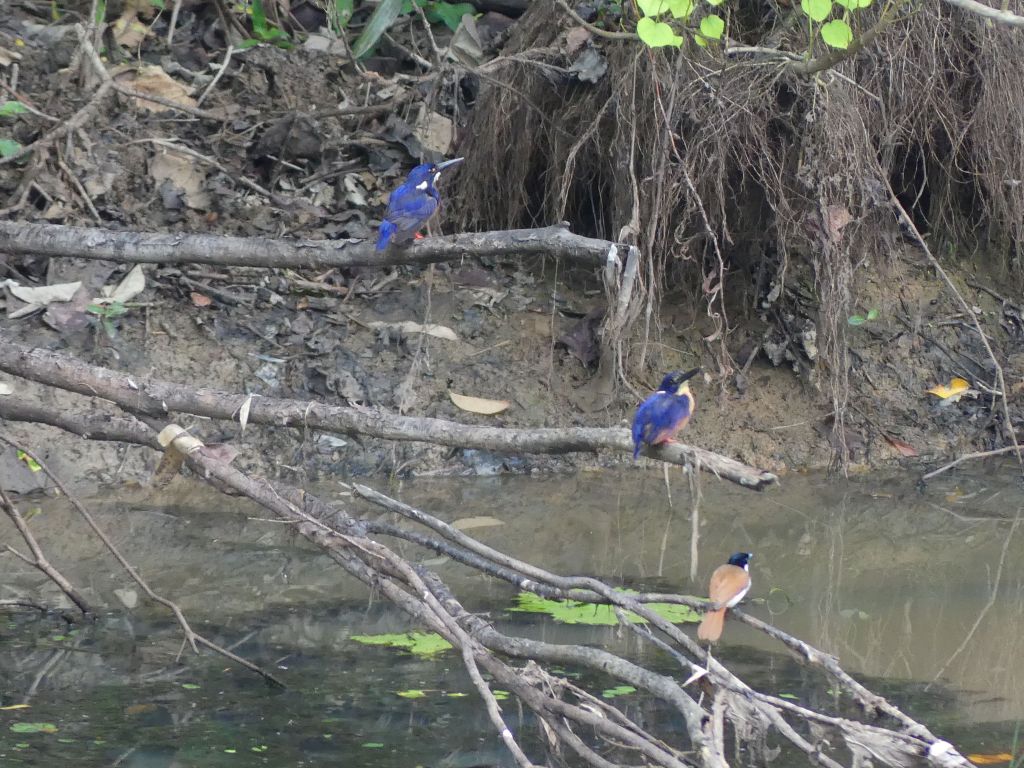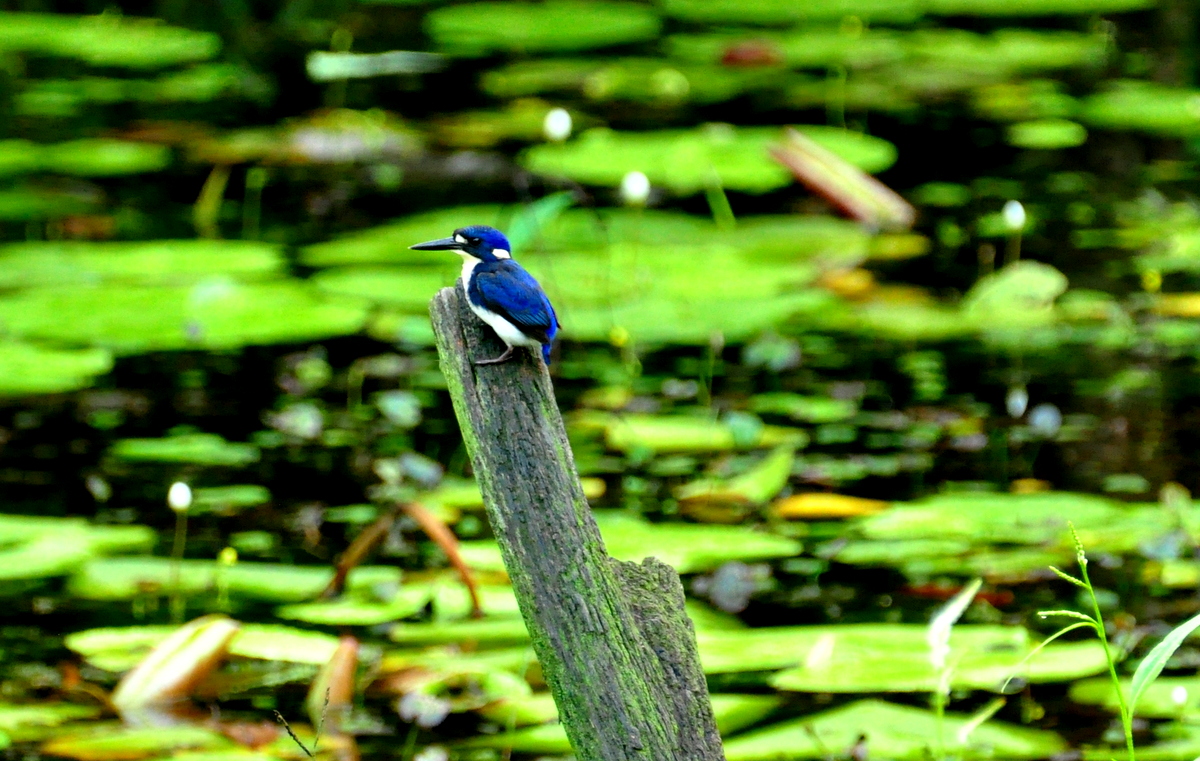After such regular rainfall through the ‘winter’ months I thought our main mudflats were, once again, to remain an underwater mystery. Luckily ‘the tap’ was turned off for a few weeks as the heat increased and much to the delight of several bird species, in addition to the resident humans, the mud was revealed in all it’s glory with lots of yummy insects.

At first glance it may appear a somewhat drab outlook, however there is a veritable feast awaiting avid foragers such as the Buff-banded Rail in the photo above. It shared the space quite amicably with a couple of Pale-vented Bush-hens and a Jacana which, although often seen on the water lilies, couldn’t resist the abundant caterpillars on the mudflat.

A visiting Oriental Cuckoo joined in the feast and occasionally a White-browed Crake would sneak out from the cover of the sedge to feed quite manically in the shallows.

It is lovely to have the opportunity to actually see some of the birds that reside here. When the water levels are high we often hear the calls but it is fun to watch the interactions between the species feeding together. The White-browed Crake, which does tend to be a timid species, runs for cover as soon as the Jacana approaches.

Our camera doesn’t really cope with the distance but it was such fun to see the Shining Flycatcher share the perch with the Azure Kingfishers for a few minutes.

I started uploading these photos a few days ago and since then we’ve had more than 80mm of steady rain which is a wonderful soaking and has cheered up the vegetation that was starting to look a bit thirsty. The downside is that the retrieval of the weeds that I left on the edge of the mud are no longer ‘on the edge’. Looks like it is going to be another very muddy experience!



































